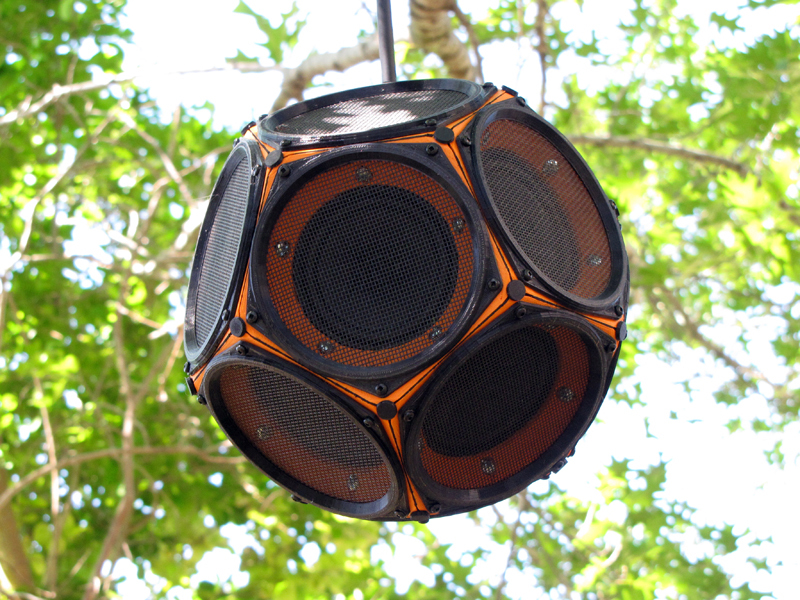At normal listening distances, an array of twelve speakers arranged on the faces of a dodecahedron is a very good approximation of a point sound source, and the sound waves it produces are very close to perfectly spherical. A dodecahedron speaker can be a useful tool in acoustics research, and is definitely a fun toy to pull out at parties. They are available commercially, but very expensive. Some people build their own, but the odd compound angles and the high degree of accuracy and precision required in the parts make for challenging work with manual tools. But it’s easy for a 3D printer.
If you have a RepRap, MakerBot, Up!, MakerGear, Ultimaker, or other suitable fused-filament printer, you can print and build this speaker for just under $100 in parts and materials. That includes speakers, hardware, wires, cable, plastic filament–everything.
The high symmetry of the dodecahedron is amenable to a modular design, and this one consists of four basic parts: the face modules, the vertex plugs, the edge gaskets, and the bezels. The 3D models are all available on Thingiverse. The speaker grilles are made from hardware store window screen cloth installed in the bezels using rubber spline and a screen roller tool, just like a residential window screen.
The assembled speaker array weighs 5.6 lbs, not counting the cable, and measures 7.5″ across, from face to face, and 8.6″ from point to point. The speakers are wired in a hybrid series-parallel circuit that brings the total array impedance to about 10 ohms (again not counting the cable) which should be a comfortable load for most amplifiers.



